
Overview
This article delves into the average conversion rates in ecommerce for Direct-to-Consumer (DTC) brands, underscoring the critical need to grasp industry benchmarks and adopt effective strategies to enhance these rates. Notably, top-performing DTC companies can achieve conversion rates surpassing 5% by employing tactics such as:
- User behavior analysis
- Targeted marketing strategies
- Optimizing the checkout process
These tailored approaches not only lead to substantial increases in sales but also significantly boost customer engagement.
Introduction
Understanding the nuances of ecommerce conversion rates is essential for direct-to-consumer (DTC) brands aiming for success in a competitive market. With benchmarks indicating that top performers can exceed a 5% conversion rate, companies face the imperative to adopt innovative strategies that not only drive sales but also enhance customer engagement. Yet, as many brands contend with misconceptions and varying performance metrics across industries, a critical question emerges: what are the key insights and actionable tactics that can transform conversion rates and ensure sustainable growth?
Parah Group: Expert Strategies for Boosting Ecommerce Conversion Rates
employs a suite of skilled tactics designed to enhance . These include:
- User session recordings to analyze
- Competitor analysis to identify market gaps
- Persuasive copywriting that resonates with target audiences
This guarantees that every aspect of a client's website is optimized for maximum impact. For example, a $30M apparel company experienced a remarkable 35% increase in their following Parah Group's redesign of their homepage, which emphasized social proof and optimized product pricing. In a similar vein, a $15M cleaning product company boosted their by an impressive 80% through strategic bundling and price testing. Such transformational case studies vividly demonstrate how Parah Group's innovative can significantly enhance the conversion rate average ecommerce for direct-to-consumer (DTC) companies.
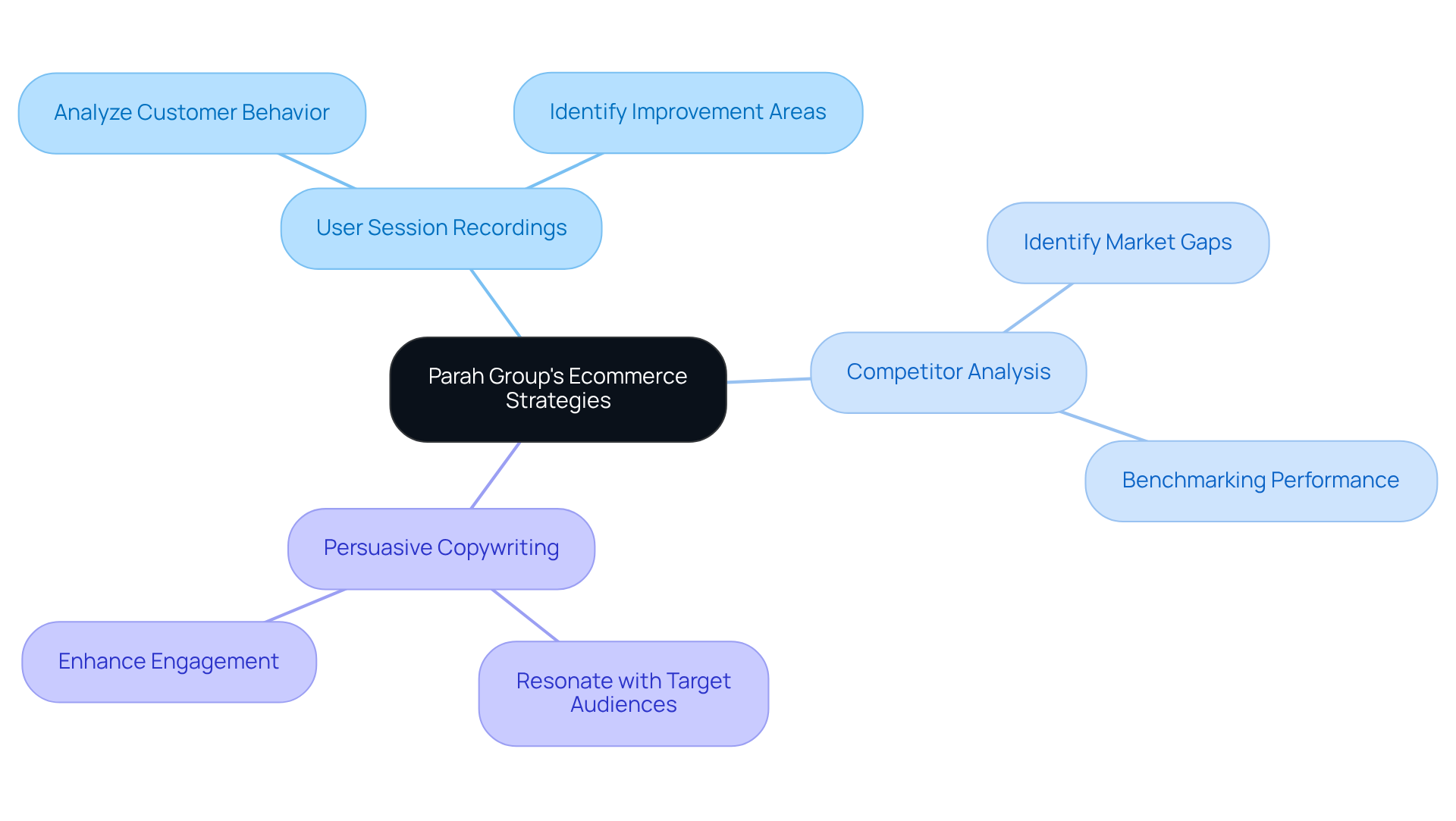
Average Ecommerce Conversion Rate: Key Benchmarks for 2025
As of 2025, the for success percentage stands between 2.5% and 3%. Notably, can achieve a conversion rate average ecommerce that exceeds 5%. These benchmarks serve as critical guidelines for companies to assess their performance in relation to the conversion rate average ecommerce and identify areas for improvement.
To exceed these averages, companies must implement to their unique customer base. Leveraging expert insights from agencies such as is essential, as they emphasize through .
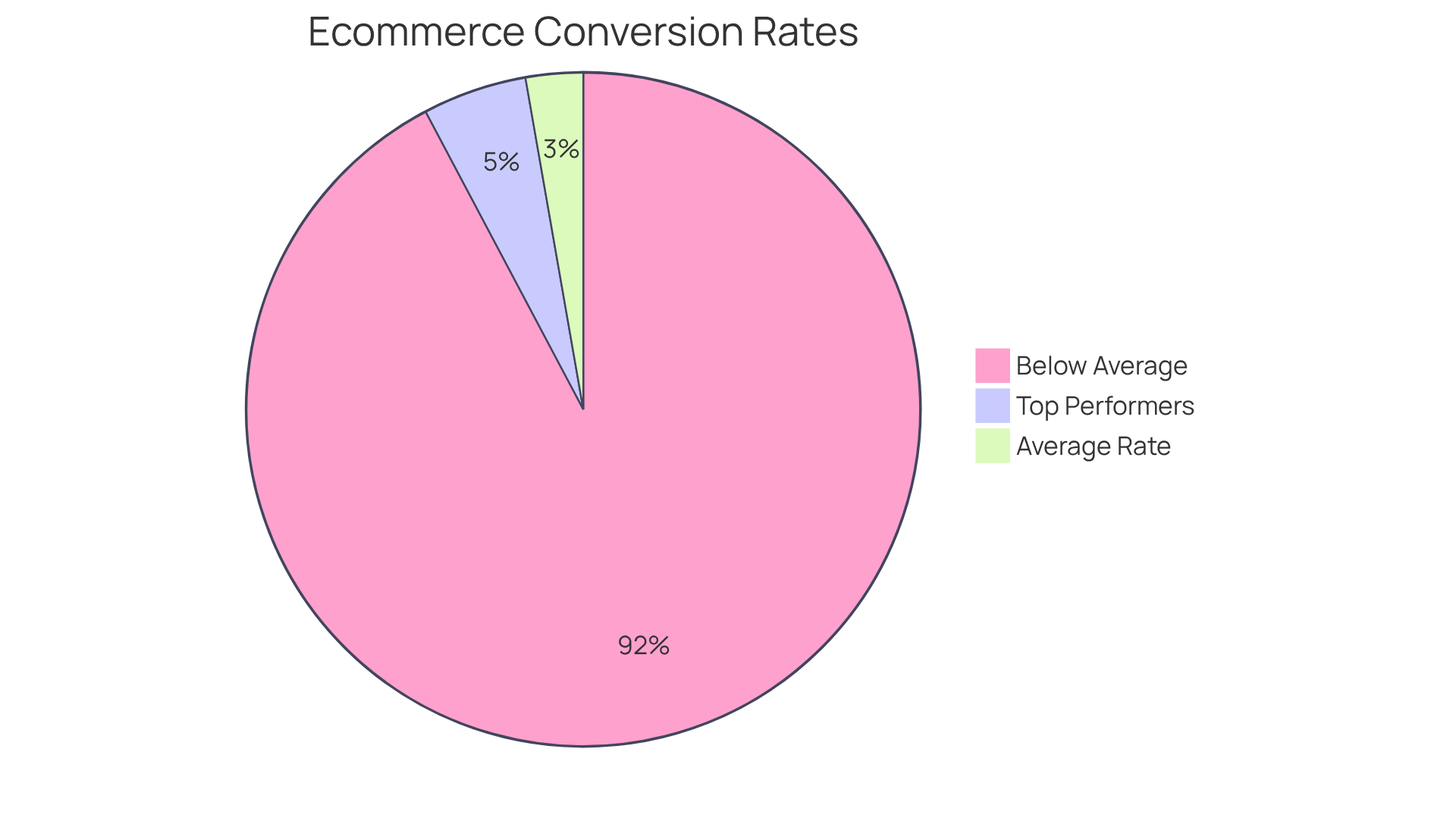
Ecommerce Conversion Rates by Industry: Insights for Targeted Strategies
The success percentages show significant variation across sectors. For instance, the conversion rate average ecommerce for fashion and beauty companies typically ranges from 1.5% to 2.5%, whereas electronics can see figures from 2% to 4%. Understanding these empowers to formulate that align with their distinct market dynamics. This alignment is crucial for and achieving .
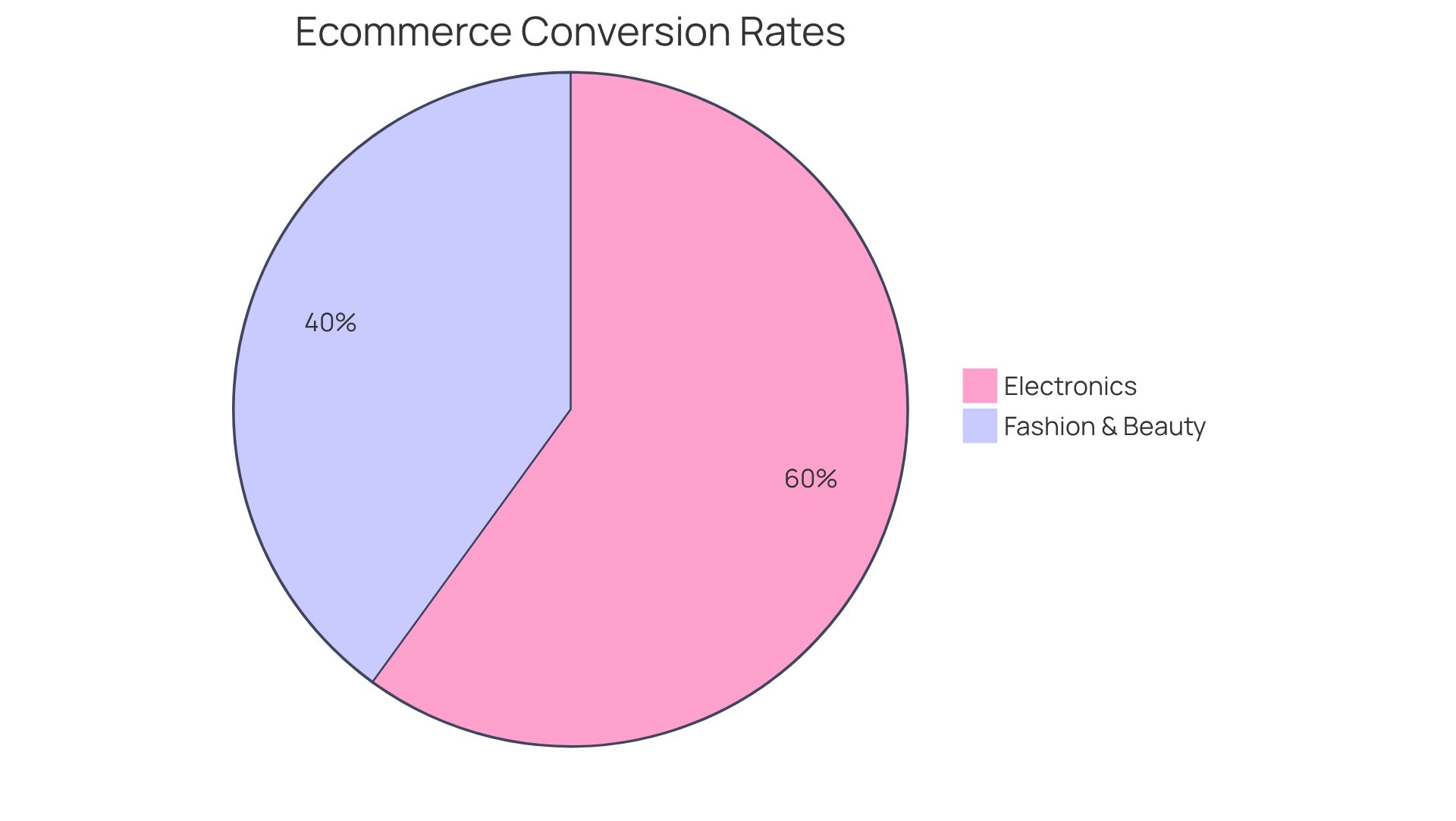
Device Impact: How Ecommerce Conversion Rates Vary by Platform
vary significantly by device. Desktop users typically achieve success rates between 3% and 5%, while mobile users often see rates ranging from 1.5% to 2.5%. This stark contrast underscores the critical need for companies to prioritize . A seamless not only enhances user satisfaction but also drives sales.
For instance, at , we assisted a $30M clothing company in revamping their homepage to highlight social proof and testimonials, resulting in a remarkable 35% increase in sales. Furthermore, implementing has proven effective in enhancing mobile user interfaces, leading to an uptick in immediate purchases.
As digital marketing experts assert, optimizing for mobile is no longer optional; it is essential for capturing the growing number of consumers who prefer shopping on their smartphones. With nearly half of occurring through mobile devices, companies that fail to adapt risk forfeiting substantial revenue opportunities.
Therefore, investing in mobile-friendly designs and efficient checkout processes can yield significant improvements in the , making it imperative for DTC brands to focus on this aspect of their ecommerce strategy.
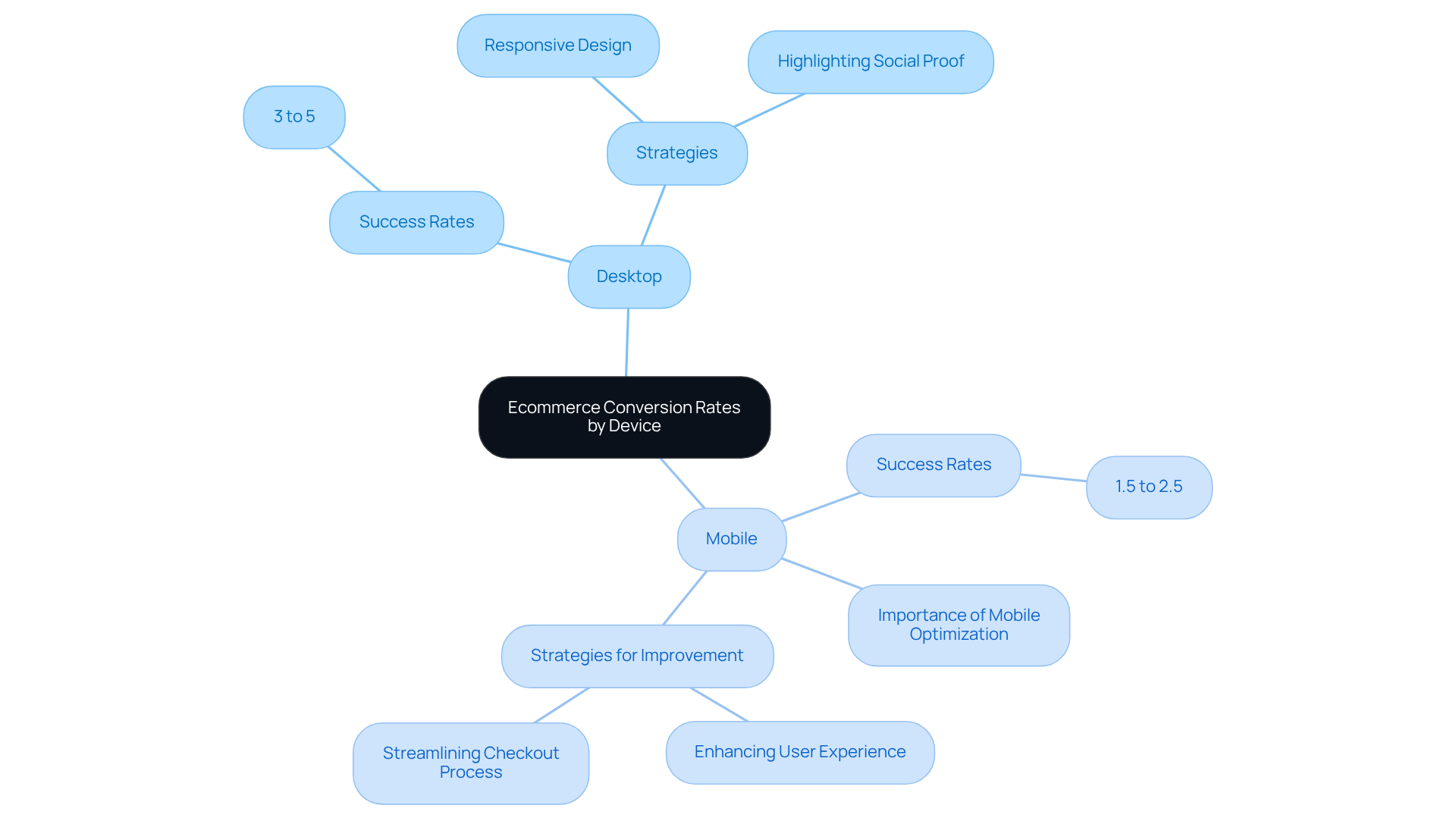
Regional Variations: Ecommerce Conversion Rates Across Different Countries
Ecommerce success percentages show significant disparities across nations, with mature markets like the United States and Canada typically achieving a of between 3% and 4%. In stark contrast, developing markets often see lower transformation percentages, ranging from 1% to 2%. This disparity underscores the critical need for companies to to resonate with local audiences.
For instance, a case study involving a $30M clothing company demonstrated that by redesigning their homepage to highlight social proof and refining product pricing, they . Similarly, Grab Green, a cleaning product brand with $15M in revenue, enhanced their by 80% through strategic bundling and price testing.
These examples illustrate that can lead to more effective engagement and heightened success. Furthermore, analysts emphasize that regional variations in shopper preferences and purchasing habits significantly average ecommerce. Companies that adapt their strategies to these nuances, as evidenced by , are better positioned to enhance their sales performance and drive revenue growth.

Channel Performance: Analyzing Ecommerce Conversion Rates by Source
The effectiveness of ' strategies is significantly influenced by the unique produced by various marketing channels. stands out with impressive success percentages ranging from 3% to 5%, marking it as a powerful tool for enhancing sales. In contrast, social media platforms typically yield lower success rates, averaging about 1% to 2%. This stark contrast underscores the critical need for companies to meticulously .
By focusing on the most effective channels, DTC brands can , , and ultimately improve their overall success metrics. Insights from marketing experts indicate that prioritizing email marketing can yield substantial returns, as it facilitates direct communication with consumers and promotes repeat purchases.
Numerous , showcasing companies that have adeptly leveraged to , further highlighting the channel's potential in the competitive ecommerce landscape.
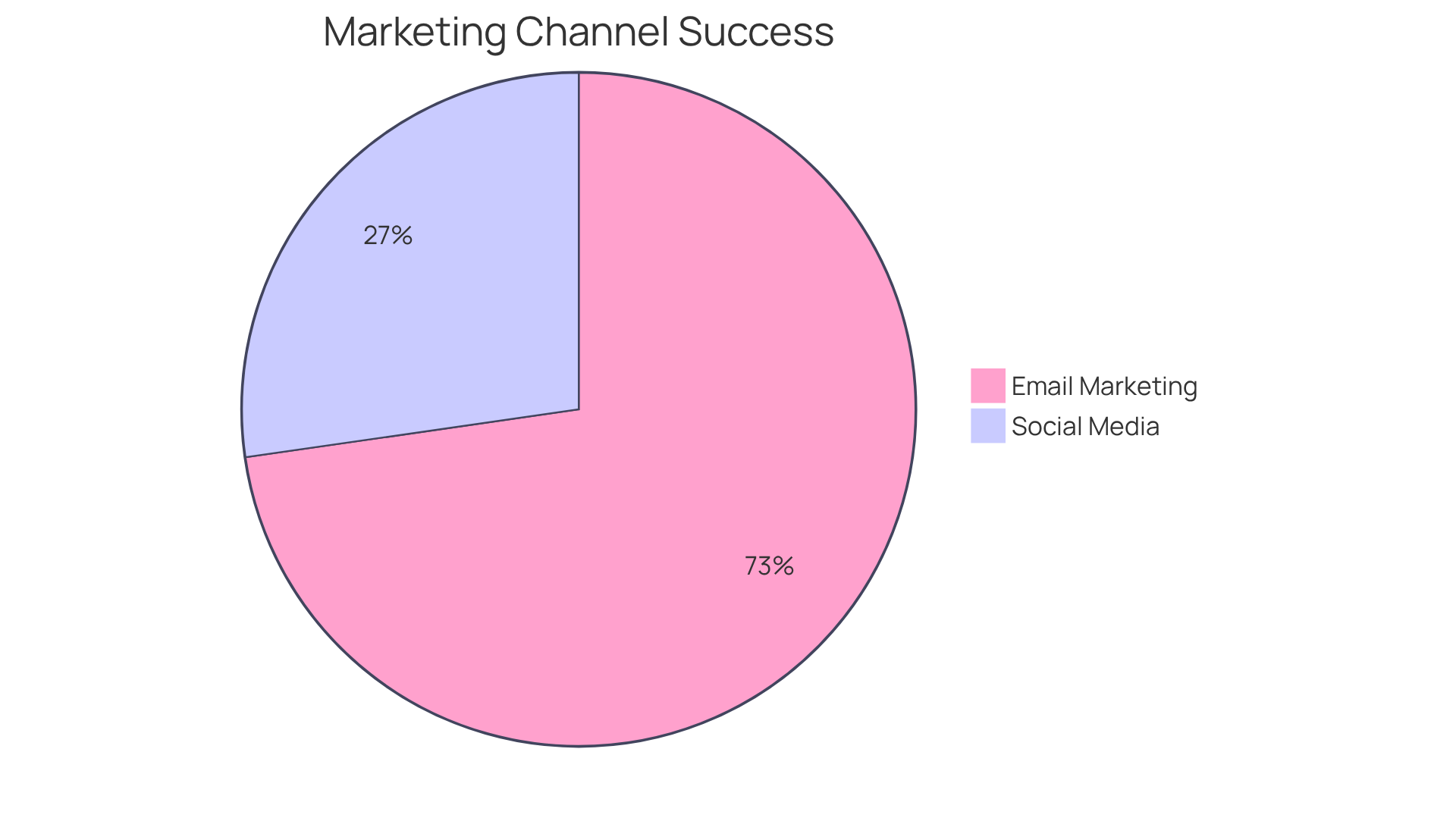
Checkout Optimization: Strategies to Reduce Cart Abandonment and Increase Conversions
To effectively , brands must prioritize several .
- Simplifying the is crucial; a streamlined experience minimizes friction and encourages users to complete their purchases.
- Furthermore, offering enhances user convenience, allowing customers to finalize transactions without the need for account creation.
- Additionally, providing in advance aids in managing customer expectations and fosters trust, a fundamental aspect of achieving sales.
Moreover, are a powerful tool for reminding customers of their . Research indicates that timely notifications can significantly enhance purchase outcomes by encouraging users to return to their carts and complete their transactions. By implementing these strategies, companies can cultivate a more that not only reduces abandonment rates but also average ecommerce.
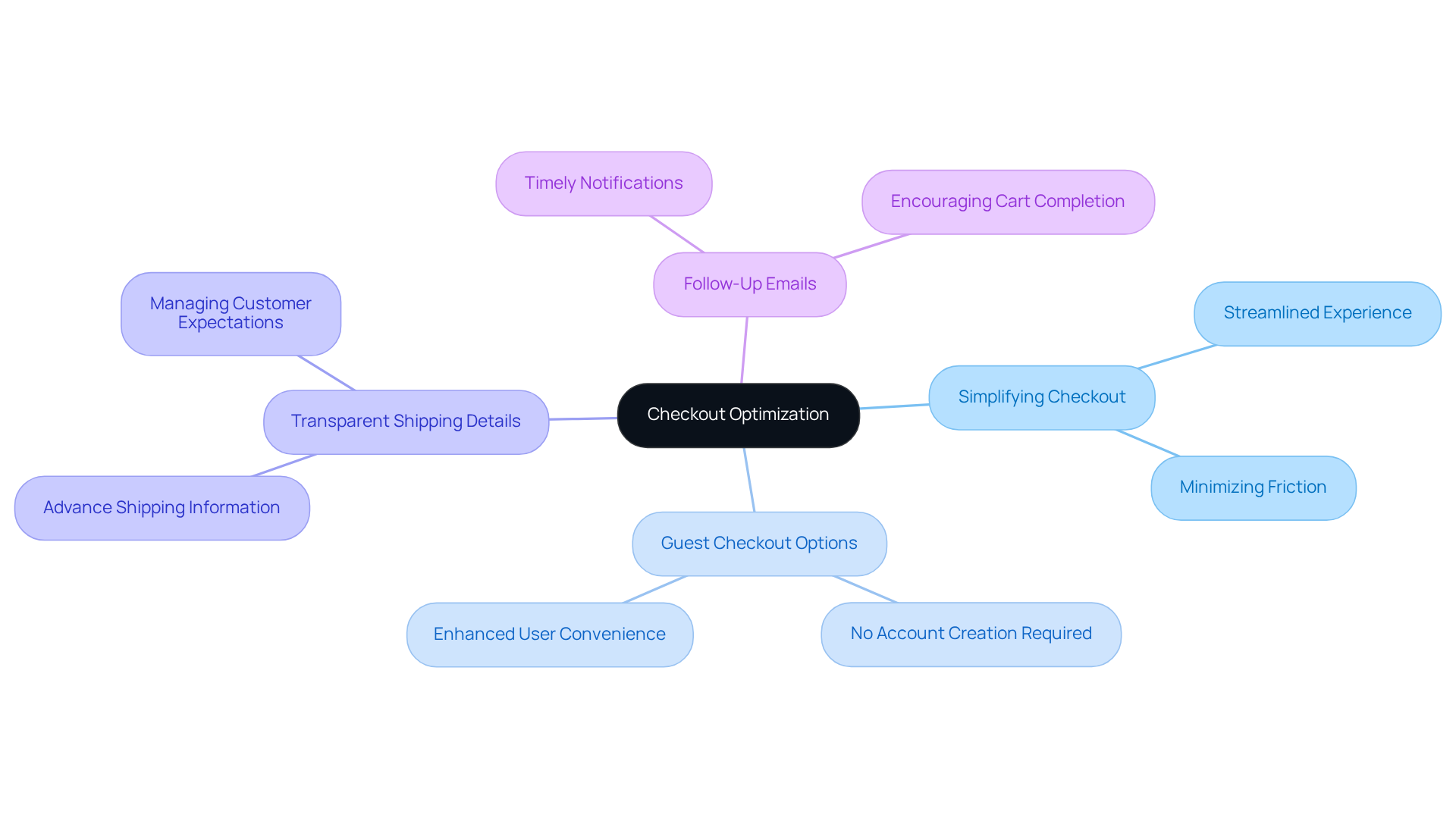
Harnessing Consumer Psychology: Techniques to Improve Ecommerce Conversion Rates
Harnessing is crucial for enhancing ecommerce success among .
- Scarcity tactics, including , instill a sense of urgency that compels customers to act swiftly. For example, messages like 'Hurry, only 3 left in stock!' can drive immediate purchases by leveraging the fear of missing out. Research indicates that urgency-driven strategies, such as countdown timers, can significantly boost transaction levels by motivating consumers to finalize their purchases before time runs out.
- Social proof, especially through authentic customer reviews and testimonials, is essential for establishing trust and credibility. Brands that showcase user-generated content, like product reviews, can witness sales rates soar by up to 200%. This phenomenon occurs because potential buyers frequently depend on the experiences of others to validate their purchasing choices. By highlighting best-sellers with badges or prominently featuring , brands can guide consumers towards profitable decisions, thereby reinforcing their confidence in the company.
- Personalization further elevates the shopping experience by tailoring recommendations based on individual browsing behavior and preferences. By analyzing customer data, companies can provide relevant product suggestions that resonate with consumers, thereby increasing the likelihood of sales. For instance, a cleaning product company successfully implemented bundles and multi-packs to encourage larger purchases, resulting in an 80% . Additionally, sending personalized emails with curated product recommendations can keep customers engaged and stimulate repeat purchases.
Integrating these strategies not only boosts the but also helps foster stronger relationships with customers, transforming one-time buyers into loyal advocates. As evidenced by 's successful case studies, companies that adeptly apply these psychological principles can achieve substantial revenue growth and enhanced profitability. To fully leverage these strategies, DTC companies must consistently , ensuring they remain responsive to evolving consumer behaviors and preferences.
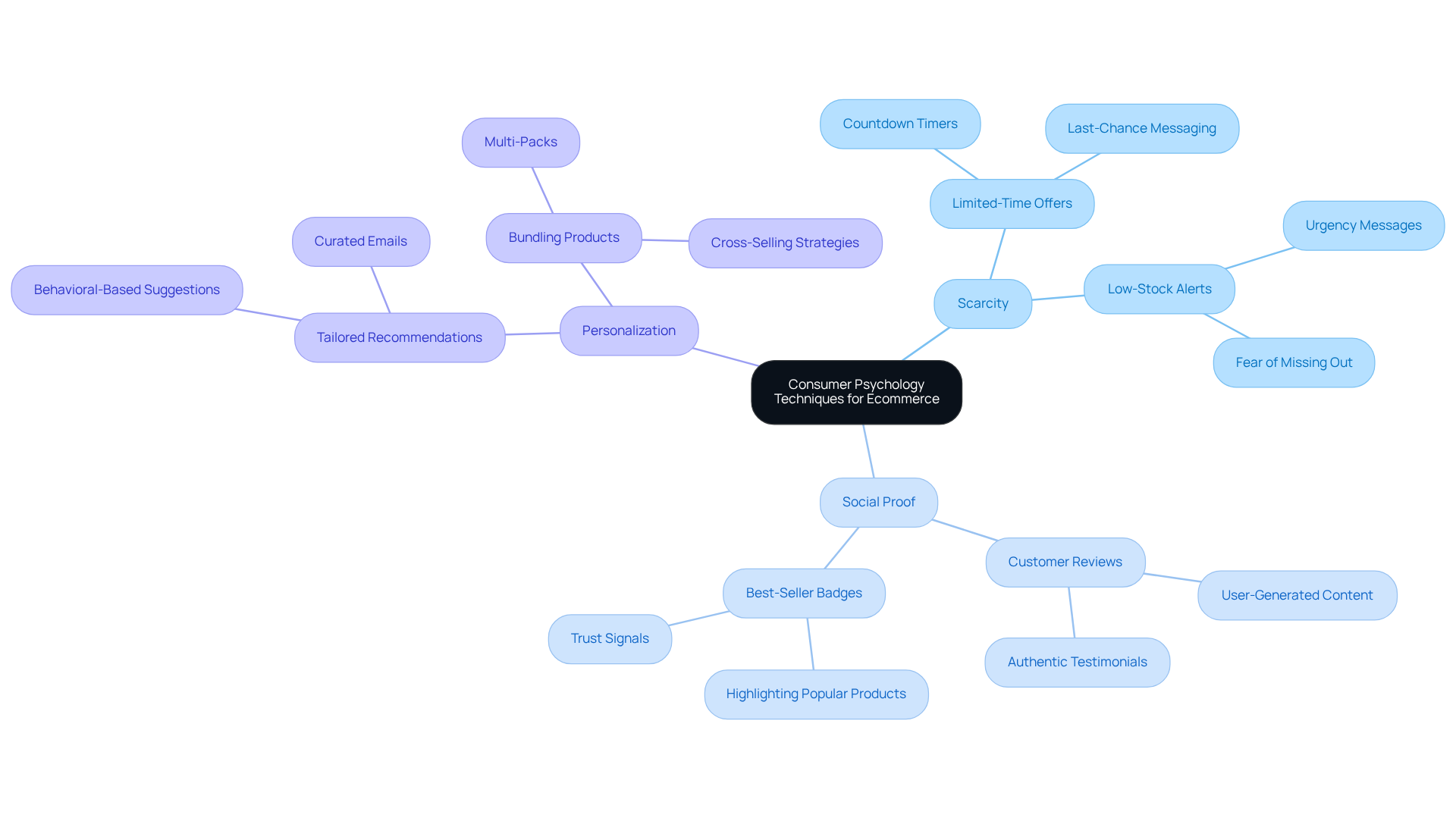
A/B Testing: Essential for Continuous Improvement in Conversion Rates
stands as a cornerstone of 's robust strategy for (CRO). By meticulously comparing various versions of their website or promotional materials, DTC companies can pinpoint which elements resonate most effectively with their audience. This process involves continuous testing of diverse components such as:
- Headlines
- Visuals
- Calls to action
Empowering companies to make informed decisions that lead to improved performance over time, Parah Group's to enhance profitability, ensuring that each test is strategically crafted to optimize results. Our proven strategies, bolstered by transformative case studies, vividly demonstrate how can drive for DTC companies.
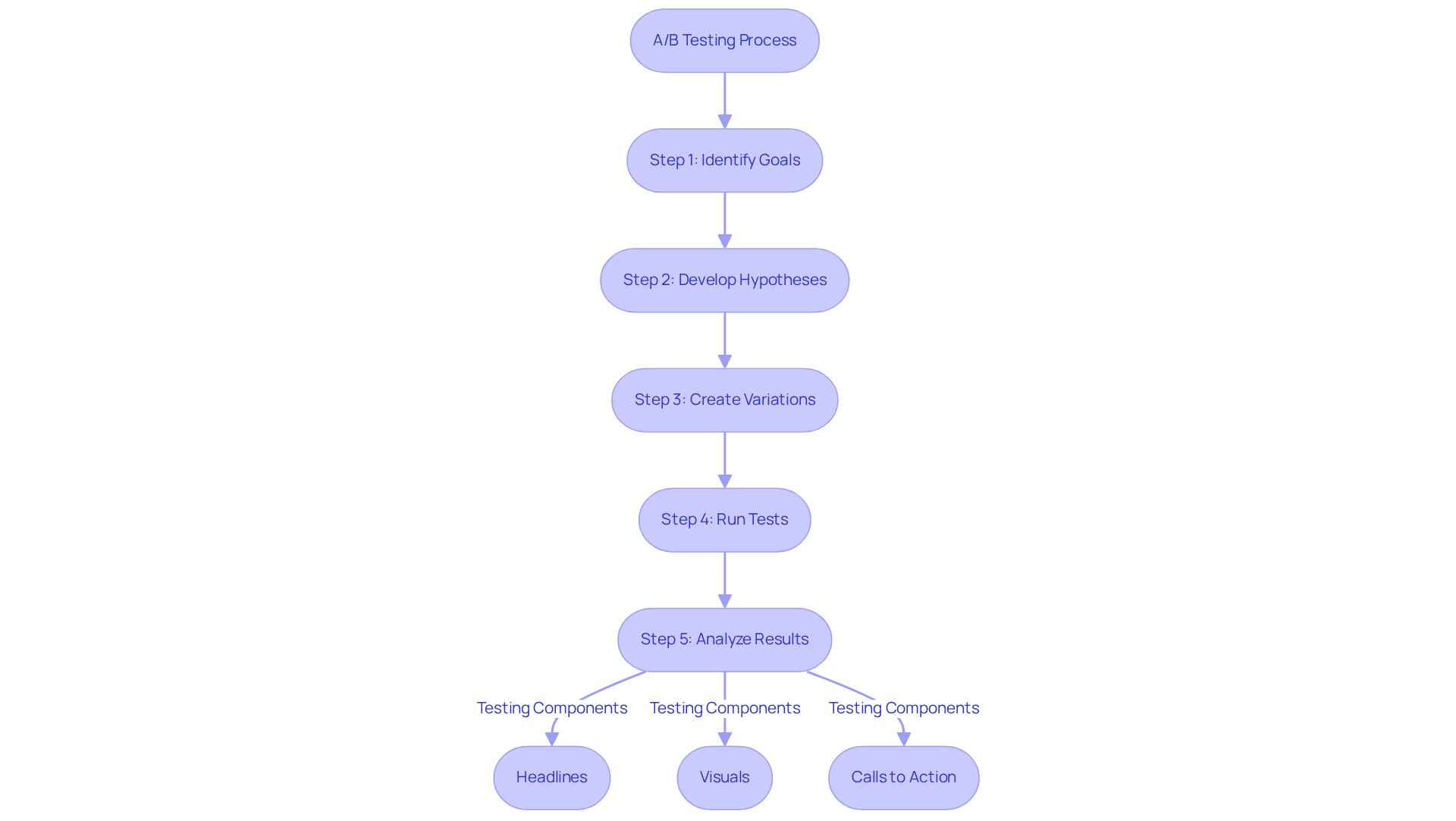
Debunking Myths: Common Misconceptions About Ecommerce Conversion Rates
Many fall prey to widespread misconceptions about ecommerce success metrics, such as the assumption that increased traffic will automatically yield better results or that a single change can lead to significant improvements. In reality, optimizing transformations is a complex and multifaceted endeavor that requires a holistic strategy. While driving traffic is essential, the quality of that traffic and the on the site are critical factors in determining success. Statistics show that organic leads convert at higher rates than paid leads, highlighting the necessity of .
Moreover, real-world examples illustrate that involves several components, including:
- Persuasive copywriting
- Ongoing testing
As Neil Patel wisely points out, writing must be or services, emphasizing the need for a confident approach in messaging.
By dispelling these myths, DTC brands can refocus their efforts on strategies that genuinely drive results, such as:
Adopting a and utilizing insights from analytics can further refine these strategies, ensuring that efforts translate into tangible improvements in the .
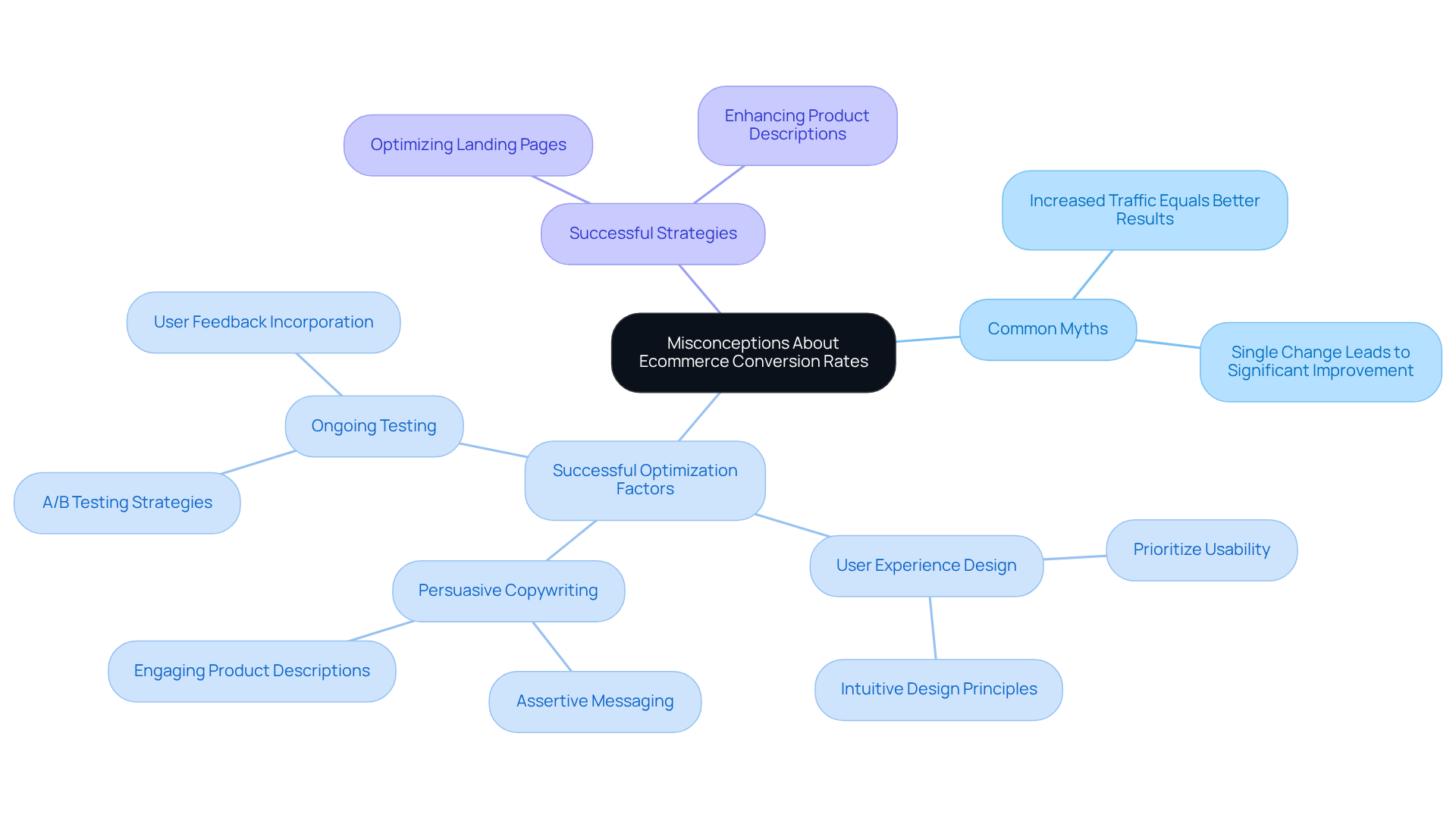
Conclusion
The insights presented underscore the critical importance of optimizing conversion rates for direct-to-consumer (DTC) brands in the ever-evolving ecommerce landscape. By employing a comprehensive approach that encompasses understanding consumer behavior, leveraging data-driven strategies, and adapting to industry benchmarks, brands can significantly enhance their conversion rate averages.
Key strategies such as:
- Mobile optimization
- Targeted marketing
- Consumer psychology techniques
have demonstrated impressive results, as evidenced by successful case studies. Furthermore, recognizing the variances in conversion rates across different industries and regions empowers DTC companies to tailor their approaches for maximum effectiveness. The emphasis on A/B testing further highlights the necessity of continuous improvement in ecommerce strategies.
Ultimately, the path to improved conversion rates resides in a commitment to understanding customer needs and preferences while implementing innovative tactics that resonate with the target audience. DTC brands are urged to adopt these expert strategies and remain responsive to the dynamic nature of consumer behavior, ensuring they not only meet but exceed the conversion benchmarks set for 2025 and beyond.
Frequently Asked Questions
What strategies does Parah Group use to boost ecommerce conversion rates?
Parah Group employs user session recordings to analyze customer behavior, competitor analysis to identify market gaps, and persuasive copywriting that resonates with target audiences.
How does Parah Group's approach impact ecommerce success?
Their holistic approach ensures that every aspect of a client's website is optimized for maximum impact, leading to significant increases in conversion rates and average order values for clients.
Can you provide examples of companies that benefited from Parah Group's strategies?
Yes, a $30M apparel company saw a 35% increase in their conversion rate after a homepage redesign focused on social proof and optimized pricing. A $15M cleaning product company increased their average order value by 80% through strategic bundling and price testing.
What is the average ecommerce conversion rate for 2025?
As of 2025, the average ecommerce conversion rate stands between 2.5% and 3%, with top-performing direct-to-consumer (DTC) companies exceeding 5%.
How can companies improve their ecommerce conversion rates?
Companies can improve their conversion rates by implementing targeted strategies tailored to their unique customer base and leveraging expert insights from agencies like Parah Group, which focus on sustainable growth and effective Conversion Rate Optimization (CRO) practices.
How do ecommerce conversion rates vary by industry?
Conversion rates vary significantly across sectors; for example, fashion and beauty companies typically have rates between 1.5% and 2.5%, while electronics companies may see rates from 2% to 4%. Understanding these benchmarks helps DTC companies formulate targeted strategies.
FAQs











